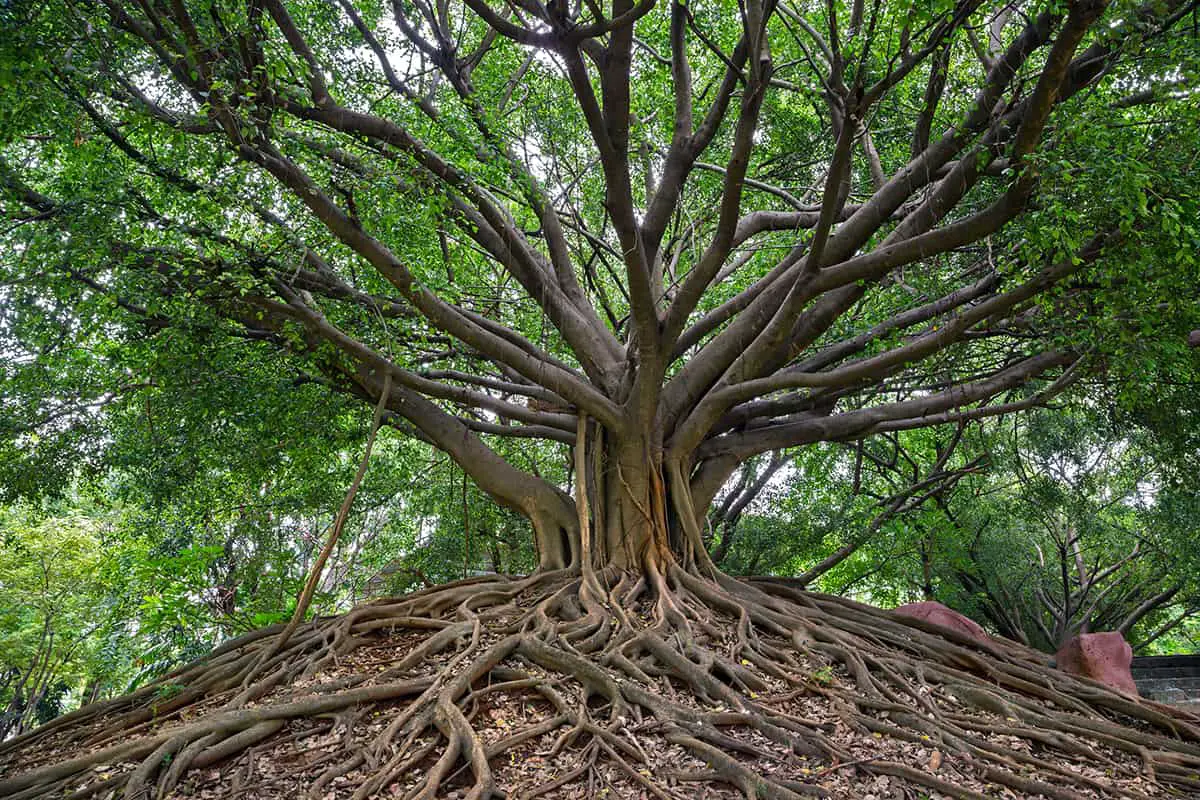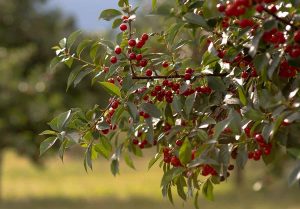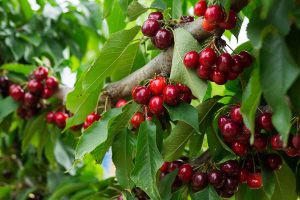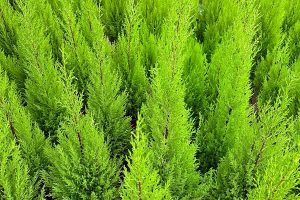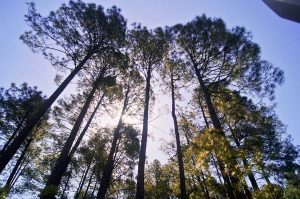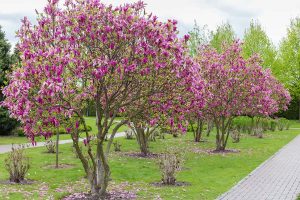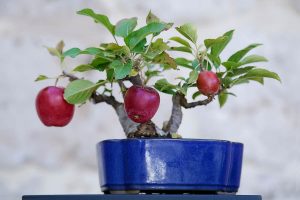Banyan Trees are a type of tree that send down aerial roots from the upper limbs, and these drop vertically to the ground where they take root in the soil. The visible aerial roots become the trunks of the tree over time, and each tree can produce as many as 3000 aerial roots to create the appearance of an entire forest made up of a single tree.
Banyan Trees can be formed from any type of strangler fig, but the most widely known species of fig which develops into a Banyan Tree is the Ficus benghalensis. These trees hail from India but can be grown outside in suitably hot climates, and they also make good houseplants.
Here we explore the Banyan Tree in greater detail, explaining the best ways to care for a Banyan Tree, and the unusual ways in which a Banyan Tree grows and produces fruit. Read on to find out all you could ever want to know about these exquisite and mystical-looking species of trees.
Table of Contents
What is a Banyan Tree?
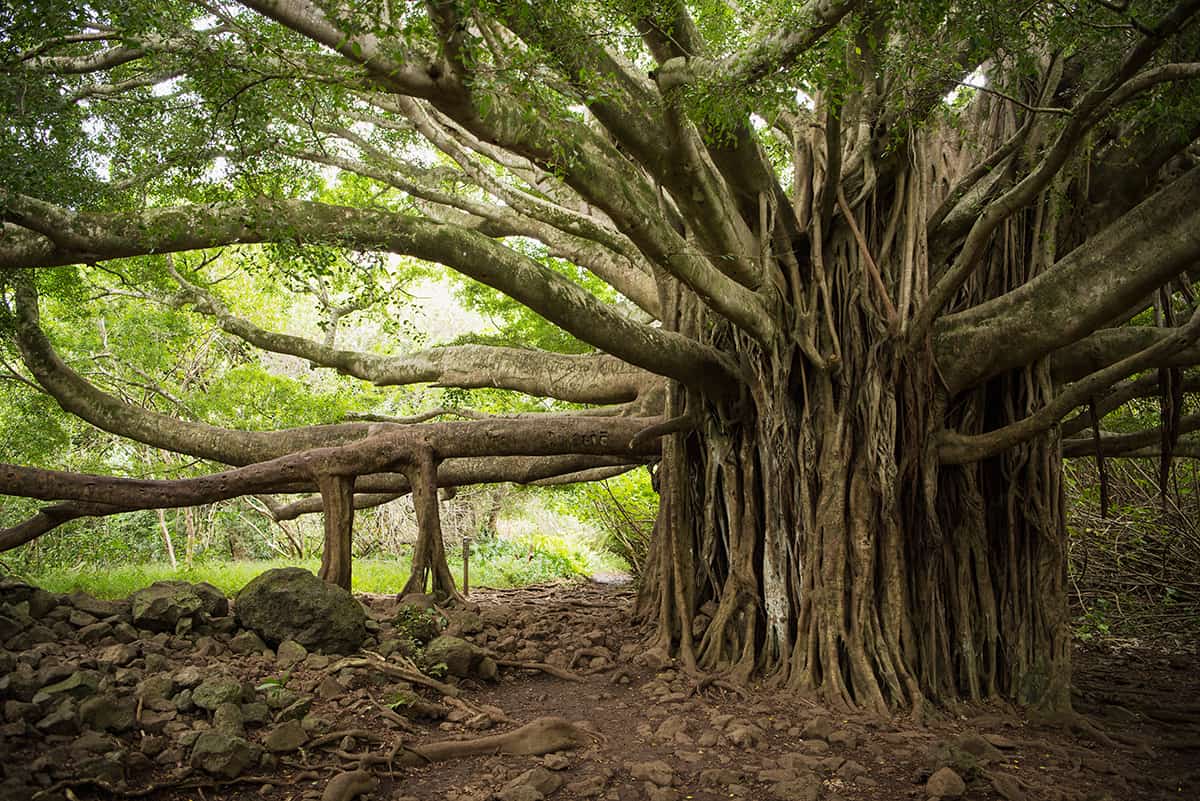
‘Banyan Tree’ is the common name given to the Ficus benghalensis. This is a tree in the Fig (Ficus) genus, which belongs to the Moraceae family, more widely known as the fig or mulberry family. The tree is native to India and the Indian Subcontinent, where it is considered to be sacred.
It holds historical, cultural, and religious value in this part of the world, and is also the national tree of India. The Banyan Tree is easy to recognize due to its huge aerial roots which drape down from the branches and bury themselves into the ground, eventually forming trunk-like structures.
How Does the Banyan Tree Grow?
The Banyan Tree grows in an unusual way compared to most other species of plants. It is what is known as a ‘strangler fig’ because it starts out life as an epiphyte that grows on a host plant and eventually strangles it of nutrients so that it takes over the spot. Instead of growing from a seed in the soil, the Banyan Tree begins life when one of its seeds takes root on a host tree.
This will usually be a result of birds eating the Banyan Tree fruits, and then excreting the seeds to land on the branches or trunk of another tree. The germinating seed of the new Banyan Tree will develop roots on its host tree and send down aerial roots continually until they encircle the trunk of the host tree.
The roots of the Banyan Tree will compete with the roots of the host tree for moisture and nutrients, effectively starving the host tree of the things it needs to survive. The Banyan Tree will usually strangle the host tree until it has no choice but to die back, and the Banyan Tree will take its place.
From there, there is no stopping the Banyan Tree in its mission to spread across the landscape. The branches will continue to produce aerial roots which reach down and bury themselves in the soil, forming new ‘trunks’. The tree will continue to grow laterally, producing an ever-widening canopy of branches and evergreen leaves, and roots and trunks which take up more and more ground space as each year passes.
The way that the Banyan Tree grows means it can keep spreading indefinitely, to completely take over a space. There are several examples of old Banyan Trees which require a huge space, including ‘The Great Banyan’ in Acharya Jagadish Chandra Bose Indian Botanic Garden, which covers an incredible 3.5 acres, and the ‘Thimmamma Marrimanu’ in Anantapur, India, which has a canopy spanning 4.72 acres.
These are considered to be individual trees as all of the aerial roots and subsequent trunks are closely connected to each other and survive as one entity, however, from a visual perspective the huge Banyan Trees appear to be more like a large forest than a single specimen. The Banyan Tree is considered to be the largest type of tree in the world, on account of the space taken up by the canopy of an individual tree.
Banyan Tree Physical Characteristics
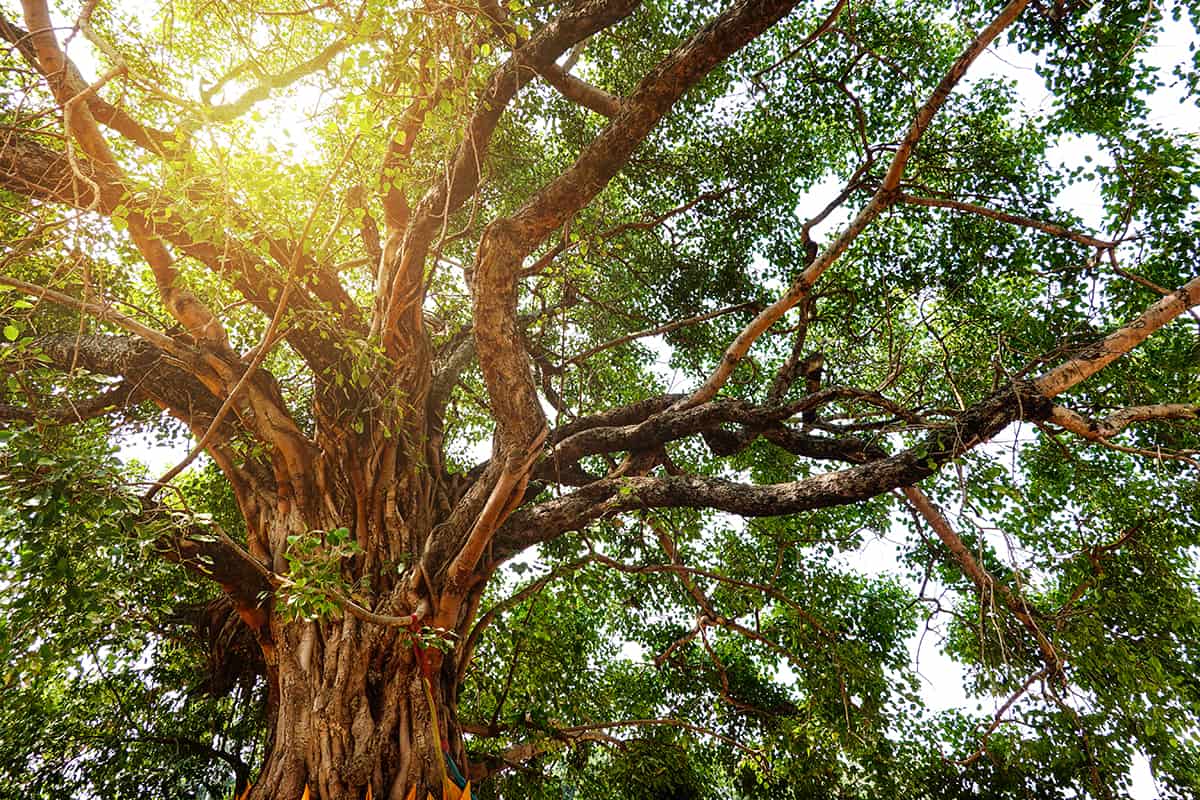
Size
The Banyan Tree can reach a mature height of anywhere between 30 feet and 100 feet. The spread of the Banyan Tree is unlimited, because it will continue to spread outwards for its entire lifespan. The largest Banyan Trees take up more than 4 acres of space with their extensive canopies, but it can take thousands of years for a tree to reach this size.
As a houseplant, you can prune back the branches of the Banyan Tree to keep it small and manageable. Growing the tree in a container will also restrict root growth which helps to keep the size compact.
Leaves
The leaves of the Banyan Tree can be ovate through to heart shaped, and vary in color from deep green to olive green. They are thick and leathery, with a somewhat glossy texture. Banyan leaves will measure between 4 and 8 inches in length, and 3 and 6 inches in width.
Flowers
The flowers of the Banyan Tree are concealed inside a fruit-like structure which does eventually mature to become the fig. Each fig, before it is pollinated, contains hundreds or even thousands of tiny flowers, hidden inside the structure. These are accessed by agaonid wasps (Eupristina masoni) known as fig wasps, who get into the structure via a miniature hole in at the apex.
A female, fertilized wasp will enter the structure and often lose her wings while squeezing through the apex hole. She will then lay her eggs amongst the tiny flowers and disperse the pollen, and she will then die, to be consumed by the fruit itself. The pollen will fertilize the flowers which can then develop into tiny fruits.
When the eggs of the wasp hatch, they will go on to perform different duties depending on which are male and female. The male wasps will spend their whole lives in a single fig, while the females escape and move on to other Banyan Trees to repeat the process.
Fruits
The fruits of the Banyan Tree are figs. They are a red-brown or purple-brown color, and are shaped like spheres or eggs. Each single fig contains hundreds or thousands of tiny individual fruits, which are the seeds inside the fig.
These figs are not widely consumed by humans because they aren’t tasty, however they are edible and so they can help to sustain a community in times of famine. Birds and wildlife will feast on the figs, and then spread the seed as waste.
How to Care for Banyan Trees
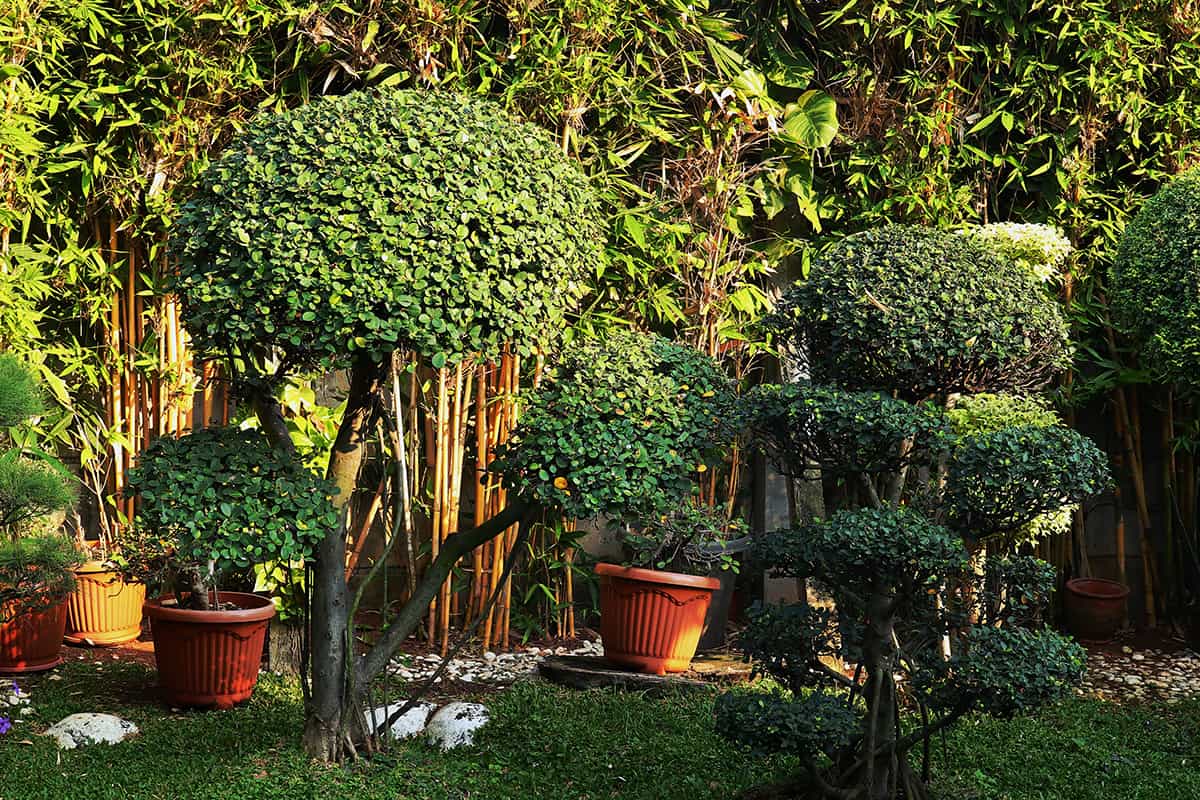
Banyan Trees are not widely cultivated in the home garden because of the space required to allow them to spread. They also tend to be quite fussy when it comes to care, which can make keeping them alive and thriving a challenge. However, many people grow Banyan Trees as houseplants or in containers, and this typically has a greater level of success.
Temperature for Banyan Trees
Banyan Trees are native to hot climates and will only survive outdoors in USDA zones 10 and up. They will die back in temperatures lower than 30 to 40 °F, which means they can only be grown outdoors in climates where winters remain mild and do not experience frost. Effectively, growing a Banyan Tree outside anywhere in the US north of Florida is going to be a struggle.
Their requirement for high temperatures makes them well suited to life as a houseplant because the average room temperature in a home is usually between 68–72 °F all year around.
Soils for Banyan Trees
Banyan Trees, like other fig trees, need soils which are well draining. This is because they enjoy moist soils but are susceptible to root rot. A well-draining soil will help to retain some moisture so that the roots of the tree can absorb what they need, without holding on to excess moisture which could cause problems.
Water for Banyan Trees
Banyan Trees need to be watered generously, and the soil should then be allowed to almost dry out before the next watering. They prefer moist soils, but it is important to let the soil dry somewhat between waterings to avoid root rot and encourage a healthy root system.
Light for Banyan Trees
Banyan Trees need to be grown in full sun when kept outdoors, but be aware that their leaves can scorch if they don’t have access to adequate moisture when kept in full sun. As houseplants, position your Banyan Tree in a bright window which is east or west facing.
They need bright, soft light, so a southerly aspect is best avoided because this light can be too direct and cause the leaves to become damaged. It can be tricky to get the lighting right for indoor Banyan trees, but be careful of moving the plant too much to find the right spot, because they dislike being disturbed.
